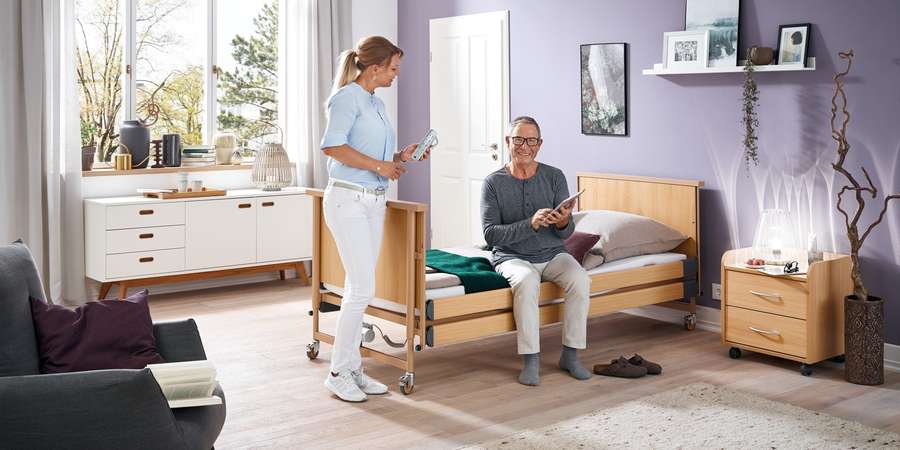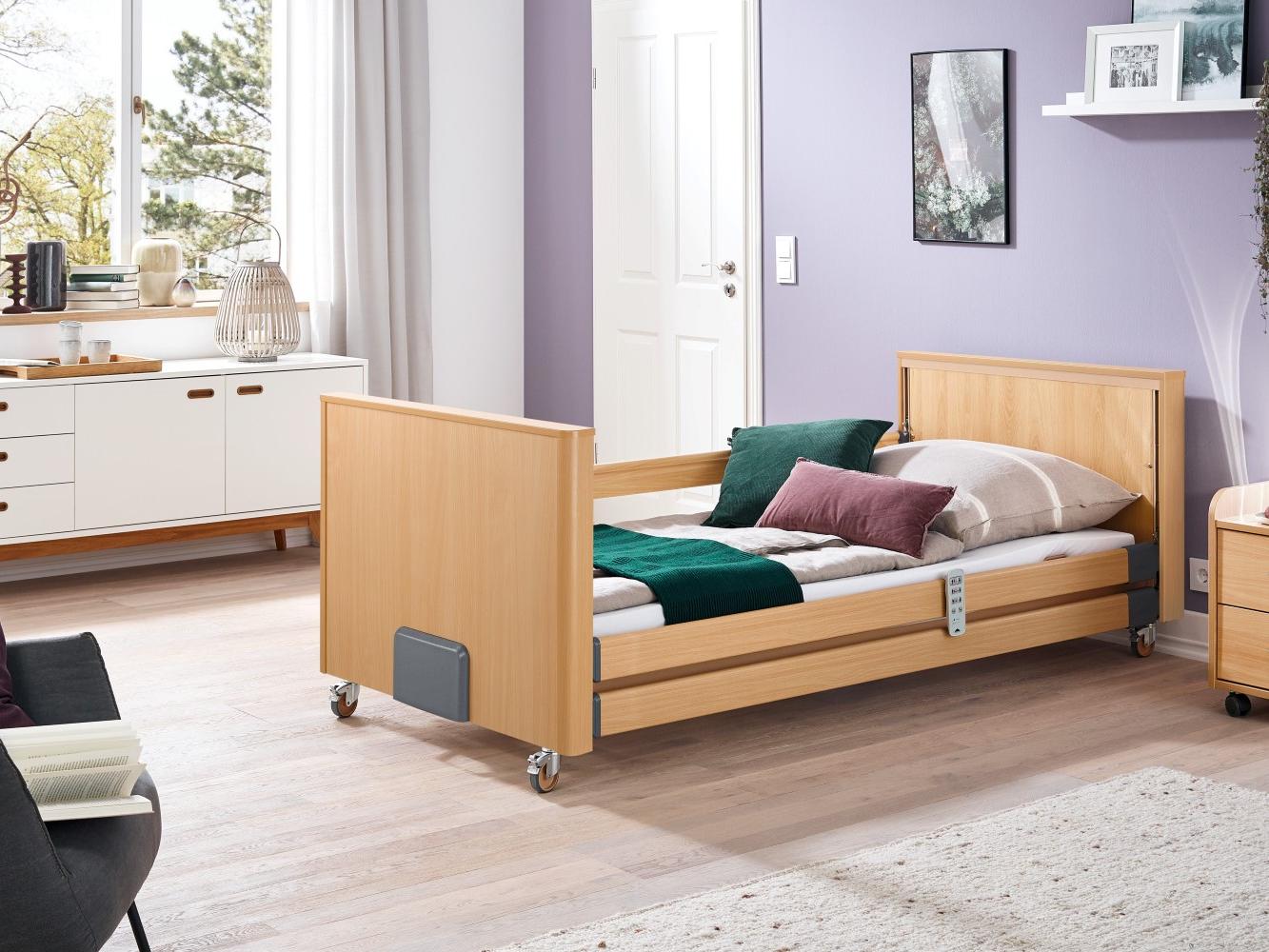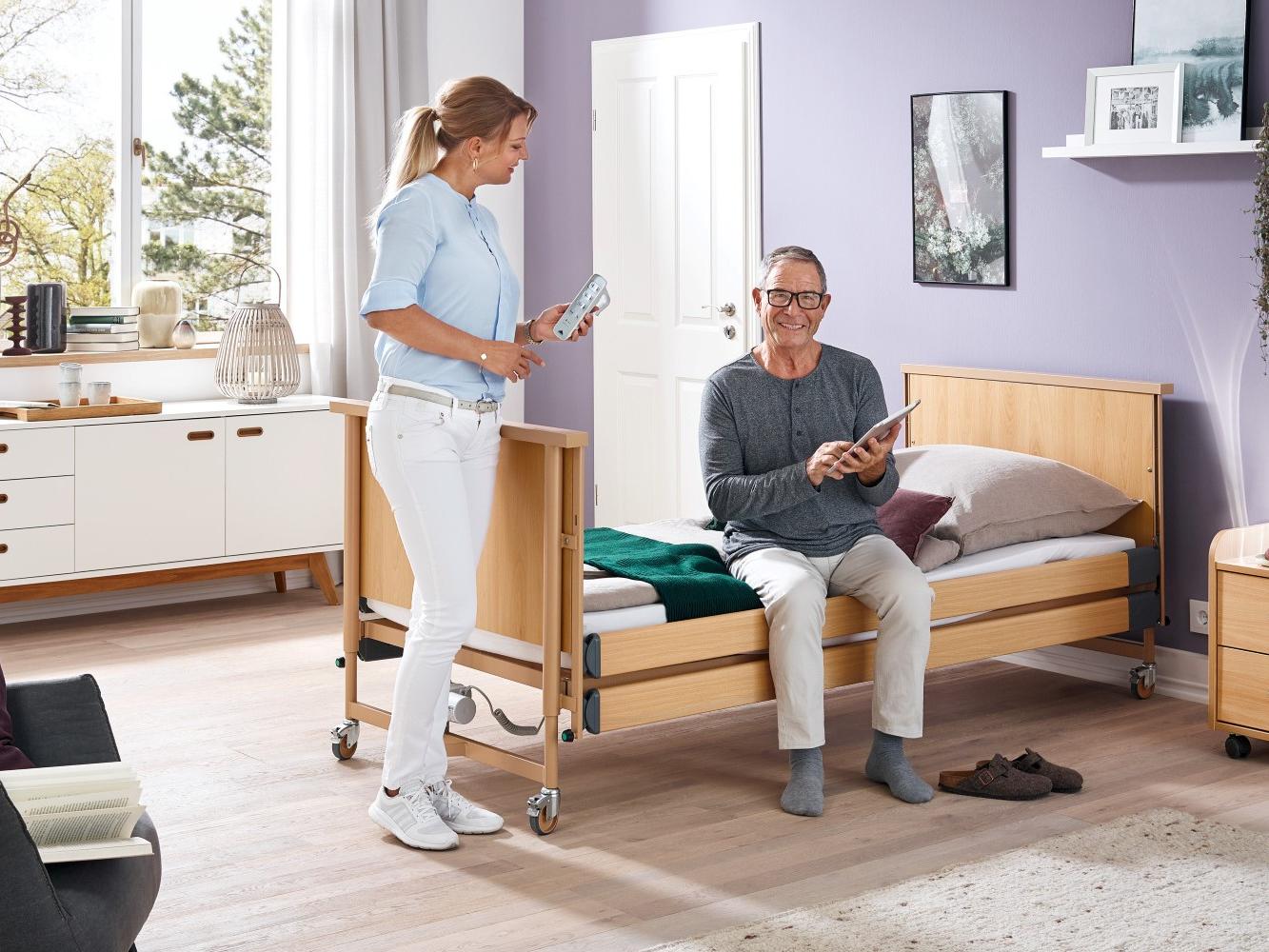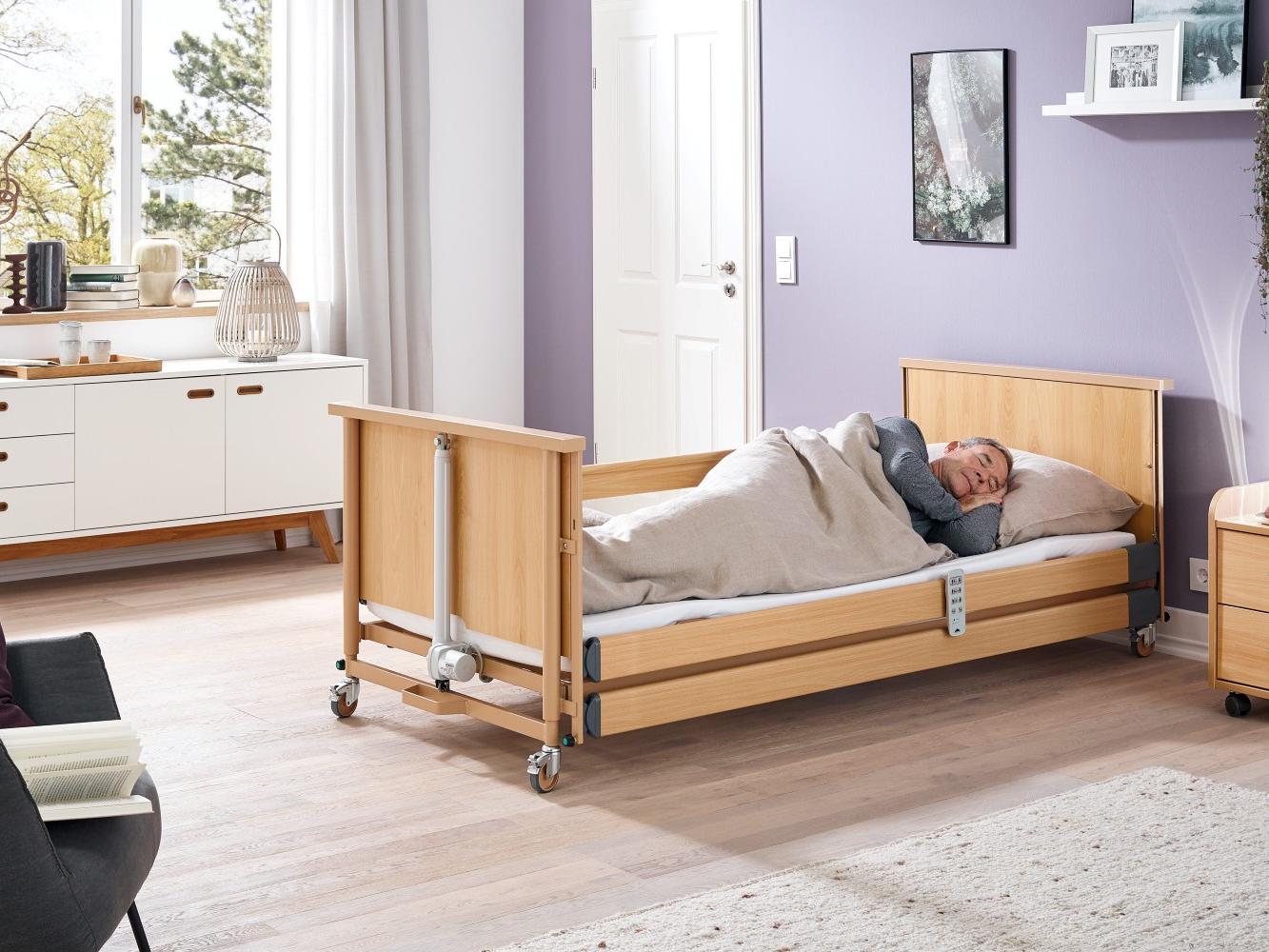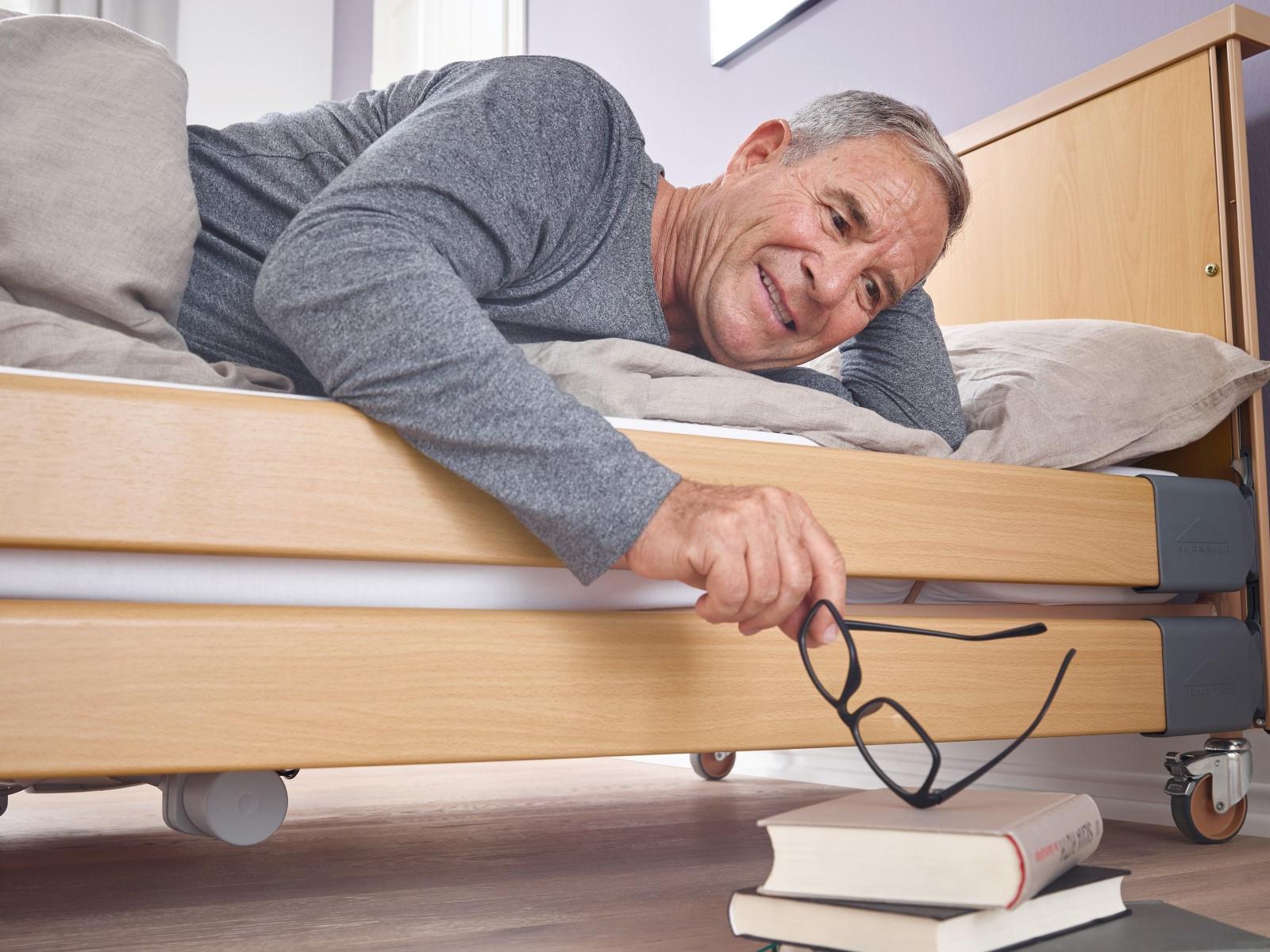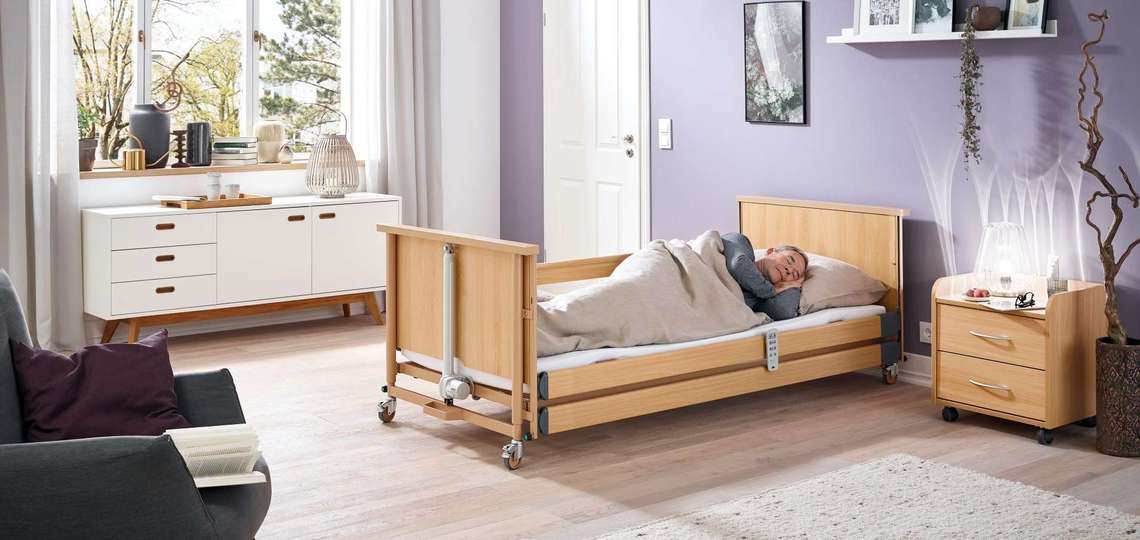
The successful path to the low-height bed in homecare in Germany
Lawyer Jörg Hackstein has valuable advice for users and medical supply retailers

Low-height beds offer great advantages in homecare. The position of the mattress base close to the floor protects people in need of care from injuries due to falls. Restricting their mobility with safety sides is often not necessary. Burmeier has successfully campaigned for the Dali low-entry to be the first low-height bed in Germany to receive an independent aid number and a care aid number. This makes it possible for the costs to be covered by health insurance or long-term care insurance. Burmeier was legally advised on this project by law firm Hackstein Reuter. How can the launch of the Dali low-entry as a care aid in Germany succeed in the best possible way? Lawyer Jörg Hackstein has a lot of valuable advice on this.
Mr Hackstein, please introduce yourself briefly.
I have been working as a lawyer since I was almost 30 years old, with a focus on healthcare and social law from the very beginning. For about 20 years, I have focused particularly on care aids and medical devices. This is also the focus of our law firm, especially in the statutory health insurance market. We advise and represent all parties involved in the chain of nursing care, from the manufacturer of the medical devices, to the specialised retailers, to the end user.
What are the specific issues at stake?
In the case of manufacturers, for example, it is a matter of contract audits, medical device law assessments with regard to the MDR (ed. note: European Medical Devices Regulation) or – less frequently – disputes with supervisory authorities. In the area of medical supply stores, it is about contractual disputes with health insurance companies, for example, about the question: Am I entitled to supply insured persons of the GKV (ed. note: Gesetzliche Krankenversicherung, engl. Statutory Health Insurance)? End consumers come to us exclusively through contractual partners. We represent them, for example, in disputes with the health insurance companies because aids were not approved. However, care beds rarely come up in these cases.
Let's assume that a doctor has prescribed a low-height bed for a dementia patient so that they can exercise their urge to move without restraints and the risk of fall-related injuries. How do the patient's relatives proceed?
The relatives take the prescription to the medical supply store, which in turn submits a cost estimate to the patient's health insurance company. If the prescription corresponds to the typical indications for a patient in need of care or the need for a bed suitable for the disabled, the health insurance company grants approval. However, we should look at this process one step earlier, namely at the prescription itself. Is it a sickbed or a care bed? Health insurance companies or long-term care insurance funds can refuse a care bed or a supposed care bed on the grounds that the patient is not in need of care. However, due to other limitations, the person concerned may well need a bed suitable for the disabled and also a low-height bed. They do not necessarily need an officially determined care level for this (ed. note: In Germany, care levels determine which subsidies insured persons receive from their long-term care insurance fund). It is therefore helpful to define the goals of care as clearly as possible when prescribing the bed: Should the bed compensate for a disability or support the care of a patient?
What would apply in our case study with the dementia patient and his or her urge to move?
This would be a mixture of both cases, as it often happens in real life. If a care level were determined and the bed in question was a normal care bed, the health insurance company would probably simply approve the application - also because there is often a fixed contract price for care beds. However, with a few exceptions, the new category of low-height beds has not yet been contractually regulated between the medical supply companies and the health insurance companies. Therefore, applicants must expect that the health insurance companies will initially try to approve only a cheaper standard care bed here as well. The medical or nursing reasons for the low-height bed should therefore be convincingly explained by the doctor in the prescription.
Which reasons are promising?
You have already given good reasons in your example: The dementia patient needs the low-height bed in order to exercise his or her urge to move and thus his or her mobility as independently as possible within the scope of his or her possibilities and to be protected against injuries from falling. Here, the low-height bed can be convincingly justified as a bed suitable for the disabled: Dementia certainly falls under the concept of disability, and ensuring freedom of movement is part of compensating for disability. The patient's basic need for mobility is thus fulfilled to a certain extent. On a similar topic, the German Federal Social Court issued a ruling in 2020: people with cognitive impairments are entitled to a GPS watch if it gives them additional freedom of movement and better participation in daily life.
What are the indications for prescribing a low-height bed as a care bed?
For nursing indications, the aim is to facilitate care, alleviate discomfort or enable a more independent lifestyle. In the case of a low-height bed with its low-reaching adjustment range, the person in need of care may be able to get in and out of bed without the help of others and with considerably reduced risk to themselves. This support for a more independent lifestyle is an indication that is often overlooked in nursing care. Here, too, there is an interesting ruling by the German Federal Social Court: mobile stair climbers were classified as care aids precisely because they enable a more independent everyday life.
As you said, low-height beds have not yet been put into a price category in the contracts between medical supply stores and health insurance companies. What can retailers do if the insurance provider only wants to reimburse a standard bed?
The retailers now have to have a contract discussion with the health insurance companies. In the contracts, the product types are shown with aid numbers as so-called seven-digit numbers. There are also different seven-digit numbers for beds, for example motor-adjustable beds, heavy-duty beds or stand-up beds. Low-height beds now form a new type of product that is not the same as or equivalent to the other beds. They differ from the other seven-digit beds in terms of design, indication and target group. Therefore, a different price must also be set for low-height beds. As long as this is not yet contractually regulated, individual decisions have to be made in the specific case instead. Ideally, the retailer first talks to Burmeier about the purchase price and then submits a cost estimate to the health insurance company. If the health insurance company refuses approval, the patient can appeal.
How long will it take before low-height beds are included in the contracts?
This depends on how quickly essential contractual partners, such as the large medical service associations in which the medical supply stores are organised, can persuade the health insurance companies to change their contracts. One motivation would be if problems with the approval of low-height beds were repeatedly reported by the individual members. It is important that the medical supply stores push this process, because the health insurance companies may not take action on their own. Ultimately, however, they also benefit from a contractual arrangement because it saves them administrative work.
Thank you very much for the interview.


